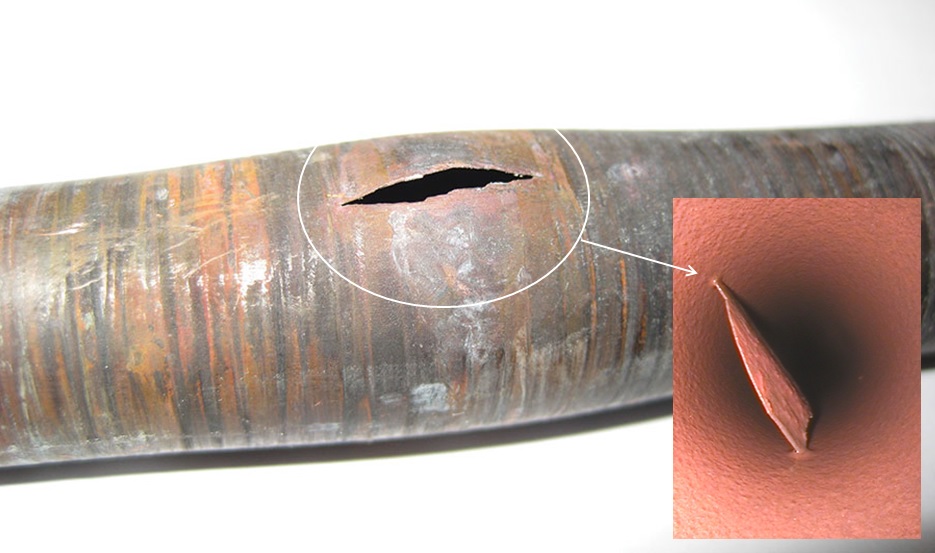Short-Term Overheating
Background
Commissioning is likely the most critical stage in the life time of a power plant due to the transient conditions which boilers are subjected to.
From the first ramp-up to normal operation, the plant is exposed to a variety of transitory conditions, thermal expansions cycles, chemical excursion and equipment adjustments that potentially increase the chance of failure.
Description
Short-term overheating is the primary cause of tube damage encountered during commissioning. The nature of this problem is mainly due to blockage in the fluid path by the inclusion of foreign materials, surface detachments and/or deposition.
Obstructions can also happen as a result of chemical cleaning when residues are not effectively removed from the system.
Analysis of the Problem
The attached photo displays an example of overheating where metal scales were found clogging all over the internal surface in the lower section of a solar preherater.
Dissimilar polarity between the scale and the tube material in the point of contact did influence changes in the electrical potential of each material forming a corrosion cell and promoting the growth of deposition.
Consequently, deposits decreased the heat transfer leading to the formation of bulges, micro-cracks and finally boiler tube burst.



